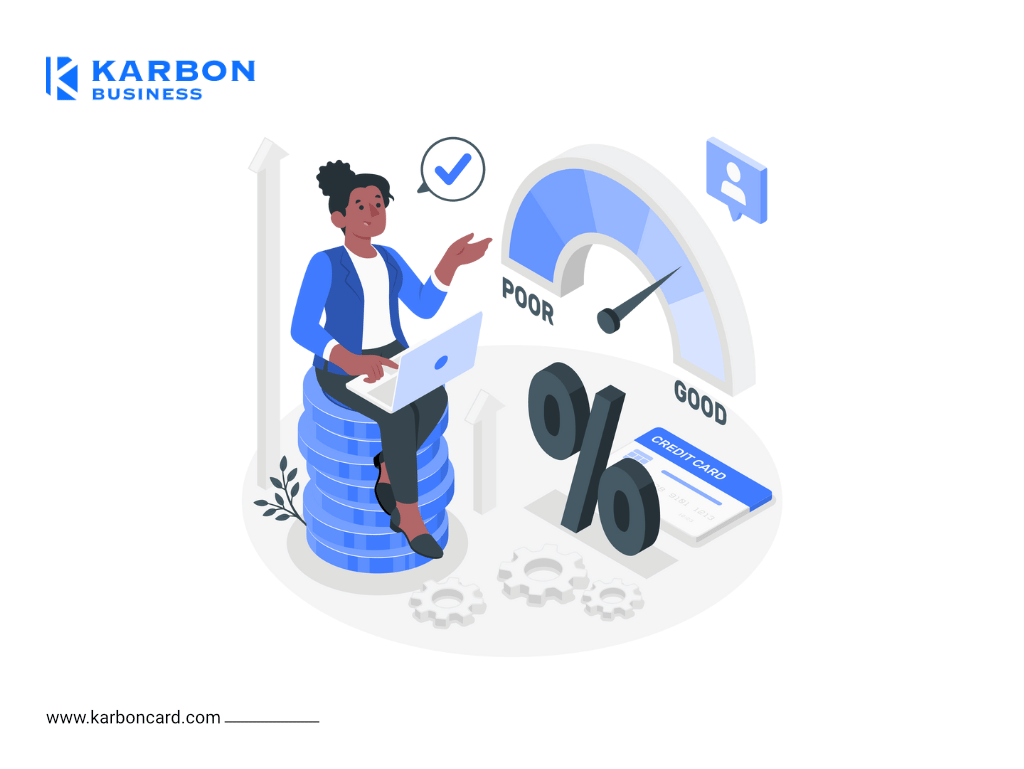Key takeaways
- Payment links deliver speed and simplicity, local bank transfers like ACH, SEPA, and FPS deliver the lowest cost for larger invoices.
- Karbon Business offers a flat 1% inward fee with mid market FX, automatic e-FIRA, and INR settlement in 24 to 48 hours, making it a strong default for Indian freelancers.
- SWIFT is the last resort, it is slower, expensive, and unpredictable due to intermediary fees and FX markups.
- A hybrid approach saves the most, use a payment link for onboarding or smaller invoices, then switch to local transfers for retainers and bigger milestones.
- Automated compliance and documentation reduce tax season stress, look for platforms that generate e-FIRA quickly and match payments to invoices.
Payment Links for Freelancers India vs Bank Transfers: Which saves you more
Most Indian freelancers juggle cross border payments, unpredictable fees, FX markups, and compliance paperwork. Choosing between payment links and bank transfers is more than a technicality, it affects how much you receive, when you get paid, and how calm you feel at tax time. This guide breaks it down so you can pick the right method for each client and invoice size.
Understanding your payment options: links vs bank transfers
Payment links let you generate a secure URL from a platform like Karbon, share it by email or WhatsApp, and get paid via card or local bank methods. Funds are collected in USD, GBP, EUR, or CAD, converted at mid market, and settled to your Indian bank account. No foreign bank account needed.
ACH is the US local payment rail in USD, fast and low cost for American clients. SEPA is the Eurozone rail in EUR. FPS is the UK rail in GBP. SWIFT is the global network used when no local option exists, it is slow and expensive.
Modern platforms let you use both methods, create links for instant card payments and share virtual USD, GBP, EUR, and CAD account details so clients pay locally and avoid SWIFT.
For deeper comparisons, see payment gateways vs bank to bank transfers, payment links vs payment APIs, and this scan of the market, best international payment gateways for freelancers India.
Bank transfer vs card payment fees India: what you actually pay
Knowing the true landed cost is crucial. Here is the practical picture based on typical pricing.
- Card via Payment Link (Karbon): ~1% flat, instant authorization and 24 to 48 hour INR settlement, automatic e-FIRA.
- Card via other platforms: ~2% to 4% plus possible hidden FX markup, fast settlement, variable documentation.
- ACH, SEPA, FPS to virtual account: ~1% on Karbon, negligible FX markup at mid market rate, no intermediary fees, 1 to 2 day settlement, automatic e-FIRA.
- SWIFT: client pays $20 to $50 to send, you pay $10 to $30 to receive, intermediary banks may take more, plus FX markup, settlement 2 to 5 days, manual FIRA headaches. See details in ACH vs SWIFT fees India.
Traditional processors often charge 3% to 5% on cards plus currency markups. Intermediary fees make SWIFT unpredictable. For a detailed overview of popular methods, check top payment methods for freelancers in India and how to pay international freelancers.
The Karbon advantage is simple, transparent 1% inward fee with mid market Xe.com rate and free automatic e-FIRA.
Real world examples: your money on different payment methods
- $500 invoice
Payment link via Karbon: ~$5 fee, instant authorization, e-FIRA generated automatically.
ACH or SEPA: ~$5 fee, 1 to 2 day settlement, automatic e-FIRA.
SWIFT: $20 to $30+ in total fees and 2 to 5 days, manual FIRA. - $2,000 invoice
Payment link: ~$20 fee, great for onboarding or urgent starts.
ACH or SEPA: ~$20 fee, fast and reliable for retainers.
SWIFT: ~$30 to $60+ and unpredictable deductions. - $10,000 invoice
Payment link: ~$100 fee but card limits or declines may occur.
ACH or SEPA: ~$100 on Karbon, client’s domestic cost is often near zero, most cost effective.
SWIFT: $50+ visible fees, plus intermediaries and FX markups that can balloon.
Pro tip: Avoid double FX. A hidden 2% to 4% FX markup on $10,000 is $200 to $400 lost instantly. Choose mid market platforms.
For broader context, see top payment methods for freelancers in India.
Settlement speed and payment certainty
- Card via payment link: instant authorization, INR in 24 to 48 hours on Karbon.
- ACH, SEPA, FPS: client pays same day to two days, you receive INR in ~24 to 48 hours on platforms with local virtual accounts.
- SWIFT: 1 to 5 days, delays due to cutoffs, holidays, and intermediaries are common.
With Karbon you can also hold USD, EUR, GBP, or CAD up to 60 days and convert when rates are favorable. See what is link payment and payment gateways vs bank to bank transfers for more, plus this market view, best international payment gateways for freelancers India.
Payment risk and reversals
Cards allow chargebacks, higher reversal risk but great speed, perfect for onboarding fees or small tickets. ACH and SEPA have lower reversal risk, ideal for recurring retainers. SWIFT is final once settled, disputes are rare but refunds are manual and tracking is harder.
Reduce risk with a hybrid approach, take a smaller upfront via link, then collect the remainder via local transfer after kickoff. Platforms like Karbon perform fraud checks and KYC in the background to minimize compliance issues. Learn more in payment gateways vs bank to bank transfers and what is link payment.
Compliance and tax documentation in India
FIRA and e-FIRA certificates are mandatory for export earnings. Traditional banks can delay FIRA for weeks, but modern platforms auto generate e-FIRA within ~24 hours. For a detailed walkthrough, see the e-FIRA and FIRC documents guide.
- Automated purpose codes and invoice matching save hours of manual work.
- GST at 18% applies only on platform fees, claim as a business expense.
- Compare total landed INR after fees and FX markups, not headline rates.
Snapshot of options: Karbon Business provides virtual USD, GBP, EUR, and CAD accounts, automatic e-FIRA, flat 1% with zero FX markup, INR in 24 to 48 hours. Other popular choices include Wise Business, Payoneer, RazorpayX International, WorldFirst, and OFX. For more context, see what is link payment and best international payment gateways for freelancers India.
Client experience and operational workflow
- How to share payment link to foreign client: Generate a Karbon Payment Link, paste into an email or WhatsApp, client pays by card or local method, done.
- Bank transfer workflow: Share your virtual USD, GBP, EUR, or CAD account details so clients pay domestically via ACH, SEPA, or FPS. Use SWIFT only if no local rail exists.
- Best practice: Let clients pay in their currency, you convert on the back end at mid market.
- Tracking: Use dashboard and WhatsApp notifications for paid, received, converted, and settled updates.
Useful references, what is link payment and best international payment gateways for freelancers India.
When to use payment links vs bank transfers: a decision framework
- Under $1,000 and urgent: Use payment links for instant authorization.
- $1,000 to $5,000 retainers: Prefer ACH, SEPA, or FPS via virtual accounts, lowest effective fee with automation.
- $5,000+ projects: Avoid SWIFT unless necessary, talk to clients about local rails.
- Client type: Individuals lean card, businesses prefer bank transfer for accounting.
- Geography: US, EU, UK should pay on domestic rails, others may need links or carefully managed SWIFT.
- Core trade off: Links are faster but costlier as a percentage, local transfers are a day slower but cheapest at scale.
More comparisons in what is link payment and payment gateways vs bank to bank transfers.
Case study: Rohan in Bengaluru optimizes his payment mix
Rohan, a full stack developer in Bengaluru, onboarded a US client with an $800 link payment, card authorized within an hour, INR arrived 36 hours later with automatic e-FIRA. For monthly $2,000 retainers, he switched to domestic ACH to his virtual USD account, saving ~$40 per invoice versus 3% to 4% processors. Over a year he saved nearly $500, avoided SWIFT deductions, and reduced chargeback risk. His client liked paying domestically, Rohan liked predictable fees and clean compliance.
Setting up both payment options with Karbon
- Gather docs: PAN, masked Aadhaar, last 3 months bank statements, and a professional profile or portfolio.
- Apply online: Quick application, fully digital.
- KYC review: Typically 2 to 4 working days.
- Go live: Virtual USD, GBP, EUR, CAD accounts and payment links available, first settlement within 24 to 48 hours.
- Invoice update: Add both the payment link and virtual account details so clients choose what suits them.
Learn more at what is link payment.
Common pitfalls and how to avoid them
- Typos in SWIFT details: One wrong character can stall funds for weeks, triple check beneficiary data.
- Hidden FX markups: A 3% markup on $10,000 is $300 lost, choose platforms with mid market rates.
- Delayed FIRA: Use automatic e-FIRA to avoid branch visits and long waits.
- Large card payments flagged: For $5,000+ invoices, pre align with the client or switch to bank transfer.
- Unclear payment terms: Add methods, timelines, and who bears fees in your contract to prevent disputes.
For more options and comparisons, see top payment methods for freelancers in India.
FAQ
How can I receive international payments in India without using PayPal, and what fees should I expect?
You can use payment links or local bank transfers via platforms like Karbon Business. Payment links typically cost 1% to 4% depending on provider, Karbon is ~1%. ACH, SEPA, and FPS to virtual accounts are ~1% with mid market FX. SWIFT can cost $30 to $80+ including intermediary deductions and FX markups, so use it only if no local rail exists.
What is the easiest way to share a payment link to a foreign client who doesn’t want to sign up anywhere?
Generate a link from your dashboard and paste it into email or WhatsApp. The client clicks and pays by card or local bank method, no account creation needed. See what is link payment for how it works end to end.
Which is cheaper for me in India, card payment via link or ACH bank transfer to a USD account?
For small, urgent invoices, card links are great at ~1% on Karbon. For retainers or larger invoices, domestic ACH to your virtual USD account is typically the cheapest at ~1% with negligible FX markup and no intermediary bank fees. Over time this saves more than card payments.
Is SWIFT really that expensive for freelancers, and when should I actually use it?
Yes, SWIFT is costly and slow due to sender, receiver, and intermediary fees plus FX markups. Use SWIFT only if your client’s country has no local rail option or if their policy mandates it. Otherwise use ACH, SEPA, FPS, or a payment link through Karbon Business.
Do I get FIRA or e-FIRA automatically if I use a platform like Karbon Business?
With modern platforms, yes. Karbon Business auto generates e-FIRA typically within 24 hours of settlement and maps it to your invoice. This keeps your export documentation clean for your CA and avoids manual bank follow ups.
Can I hold USD or EUR for a few days before converting to INR if the forex rate looks bad?
Yes, many platforms allow holding balances for a limited time. With Karbon you can hold USD, EUR, GBP, or CAD for up to 60 days and convert when the rate is favorable, giving you a simple hedge against INR volatility.
What is the best method for $2,000 to $5,000 monthly retainers from US or EU clients?
Share your virtual USD or EUR account and have clients pay via domestic ACH or SEPA. Fees are low and predictable, documentation is automated, and settlement is usually within 24 to 48 hours in INR. Reserve payment links for onboarding, urgent starts, or smaller tickets.
How do I reduce chargeback risk if I must use card payments with international clients?
Collect a partial upfront via payment link, then switch to ACH, SEPA, or FPS for milestones. Share a scope of work, milestone plan, and delivery proofs. Platforms like Karbon Business run fraud checks and KYC to reduce bad actors, but you should still keep documentation tight.
What should I put in my freelancer contract about international payments to avoid confusion?
Add a payment terms section specifying accepted methods, settlement timelines, who bears transaction fees, refund rules, and late fee policy. For example, “Deposit via payment link, remaining via ACH to virtual USD account,” works well in practice.
Can a US client pay me like a domestic vendor without dealing with SWIFT?
Yes. Share virtual USD account details so they pay via ACH, which feels like any US vendor payment. You get INR in 24 to 48 hours with e-FIRA. This is a key benefit of platforms such as Karbon Business.
Is there any GST complication if I use payment links versus bank transfers?
No difference for export income. You pay GST only on the platform’s service fee at 18%, which you can book as a business expense. Keep e-FIRA and fee invoices for your records.
What if the client pays the wrong amount or sends money to the wrong currency account?
Contact platform support immediately. Most can help with refunds or adjustments. Always include invoice number, currency, and correct account details on the invoice to avoid mistakes in the first place.
Making your choice work for your freelance business
The smartest play isn’t picking one method forever, it is using both strategically. Use payment links for freelancers India when you need instant authorization and a frictionless client experience, and use local transfers like ACH, SEPA, or FPS for larger retainers and predictable savings. Platforms like Karbon Payment Link and local receiving accounts give you both tools in one place.
Result: faster onboarding, lower total fees on big invoices, automatic e-FIRA, happier clients, and more time to focus on great work instead of chasing payments. For further reading, see payment gateways vs bank to bank transfers and best international payment gateways for freelancers India.










